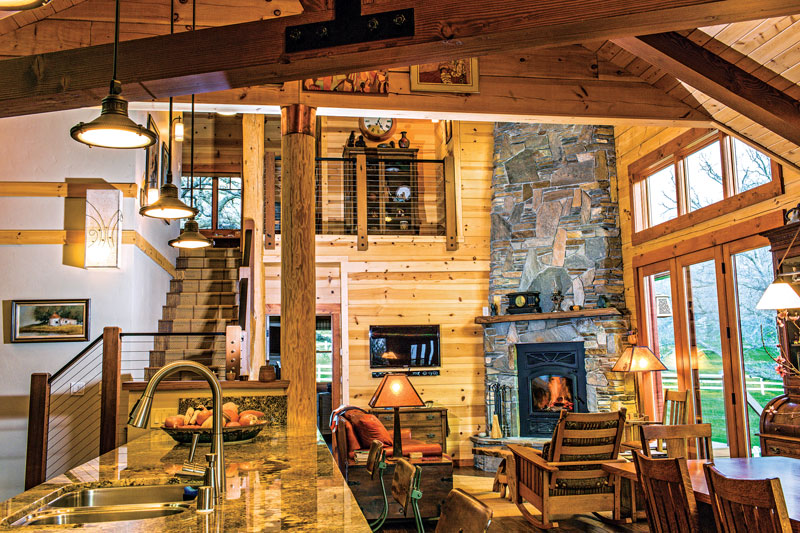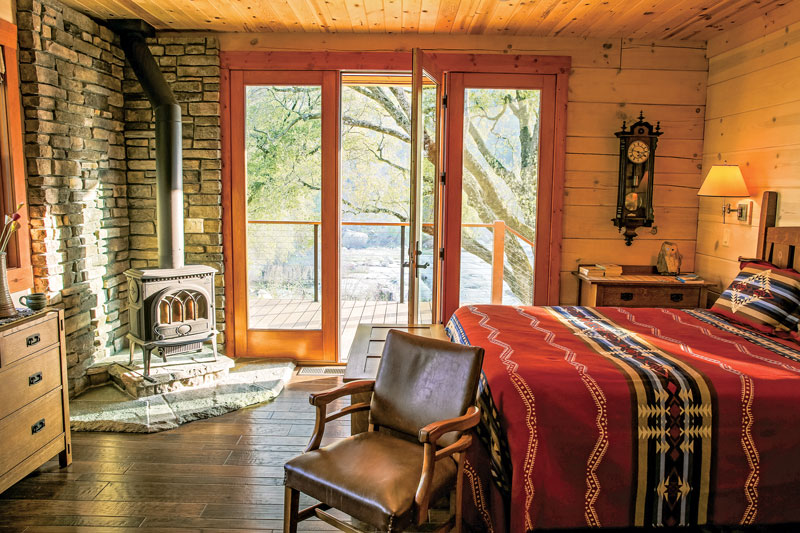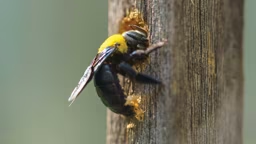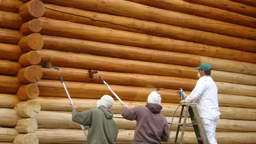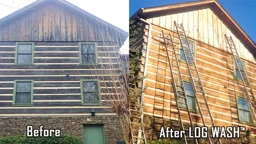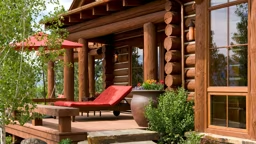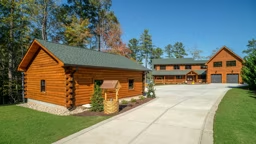With the chill of winter in the air, the thought of warming up by a crackling, toasty fire is enticing. But before lighting that match, experts advise ensuring that your fireplace or wood-burning stove is operating properly in order to maintain the safety of family members and your home.
"Any wood-burning device should be checked periodically and cleaned according to usage," says Michael Kuhn, director of field services for HouseMaster, a home inspection company that serves North America. "Whether you use a fireplace or wood-burning stove every day or once a year, proper annual maintenance will allow for years of safe and pleasurable use."
Safety First
The most important consideration when it comes to fire, of course, is safety. You should conduct your own yearly inspection to ensure that your units perform properly. 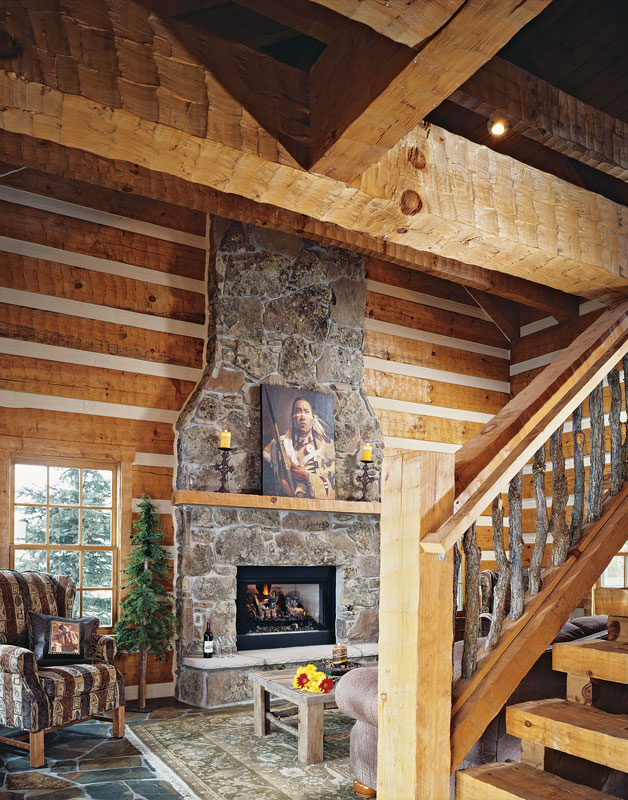 Before using your fireplace for the first time each season, Michael suggests checking the visible areas of the chimney for any blockages or creosote (a highly flammable, gummy deposit) build-up on the interior of chimney walls and the surface of the flue.
Before using your fireplace for the first time each season, Michael suggests checking the visible areas of the chimney for any blockages or creosote (a highly flammable, gummy deposit) build-up on the interior of chimney walls and the surface of the flue.
"Any deposit over 1/4-inch thick is a potential fire hazard and should be cleaned professionally," Michael says.
Creosote residue accumulates on relatively cool chimney linings and, when ignited, causes an extremely dangerous fire. To prevent creosote buildup, you should maintain a moderate fire hot enough to prevent a cool flue liner, but not hot enough to ignite creosote already formed.
"Burning unseasoned or green wood creates a 'cooler' fire, which increases the chance of the creosote build-up," Michael explains.
To lessen this problem, he suggests using aged, seasoned wood, which will burn hotter. Even if you don't notice creosote, the fireplace should be professionally inspected and cleaned once every year if used regularly or periodically, or if there is any hint of a problem.
"Sometimes a home owner will only inspect the chimney from inside the home," Michael says, "but, creosote can also form close to the top of the chimney, near the roof, where the colder temperature cools fireplace gases."
Since 90 percent of chimney fires are caused by creosote build-up, Michael recommends an inspection of the chimney from both ends, whether you do it yourself or hire a professional.
Burning With Gas
If you're using a gas unit inside the fireplace, either as an alternative to wood burning or as an igniter, then you should take special precautions to protect yourself from toxic gases, says Michael.
Most safety regulations require that gas-burning units be connected to a fireplace with a functional and permanently open flue to allow for the exhaust of combustion products and natural gas.
"I also advise home owners to check the unit's components for possible leaks or damage, and to make immediate replacements when necessary," Michael says.
Even a cursory inspection can greatly reduce the risk of future mishaps. If there is a smell of natural gas, whether the unit is on or off, you should turn off the main gas valve and immediately call a professional to determine if there is a leak.
Where There's Smoke
Once you begin using your fireplace, take care to look for problems throughout the season.
"Smoke, rust or water stains are signs of inadequate venting or flue maintenance, which could indicate numerous hazardous conditions or concerns," Michael says.
Some of these may include blockage of the flue, an insufficient smoke shelf or design construction defects. If any of these problems occur, contact the installer of your fireplace or stove for additional information or to seek out the help of a professional.
"The fireplace should not be used again until the problem is alleviated," Michael warns.
Wood-Burning Stoves
Wood-burning stoves have become quite popular in recent years. Not only are they aesthetically pleasing, they can also save on heating bills. The new models of wood-burning stoves provide an efficient source of heat for the home in case of a power outage, which can be quite common in some areas during the windy, icy months of the winter.
Despite their efficiency, wood-burning stoves require the same amount of preventative safety maintenance as a fireplace.
"If problems arise with a stove that was installed by the prior home owner, you should check with local building authorities to see if the stove was installed according to local requirements," Michael advises. "If you are in the process of buying a home with a wood-burning stove, ask the seller if there is a 'certificate of inspection' for the stove." 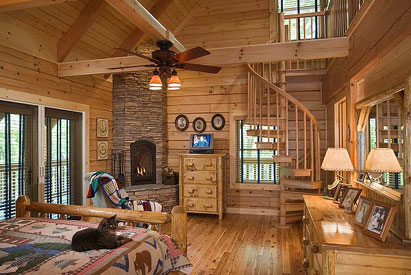
All wood-burning units should be located far enough from combustible materials and walls to prevent a potential fire.
"Local codes vary, so you have to check with the town's building inspector," Michael says.
Even if the unit is not close to combustible walls, a masonry wall may contain wood beams within it that could ignite at high temperatures. To protect your home from this problem, you may want to install special heat shields, he says. Michael also warns that stoves should not be set directly on a wooden floor or carpet because this can create another fire hazard.
"Fireproof material must always be used on the hearth and under the unit," he stresses.
Rekindling an Old Flame
When it comes time to get your fire going, use kindling rather than magazines or newspapers. Kindling is the cleanest and most efficient fire-starting material. Some magazines and newspapers give off toxic smoke when burned due to the types of ink used in the printing process.
"Newspapers also send burning ashes up your flue that can ignite a dirty chimney or land on your roof while still aglow," Michael cautions. Never use flammable liquids, such as gasoline or lighter fluid, to start or rekindle a fire. "Using these types of materials can cause an explosion, serious burns?even death," he says. "As with any home feature," Michael says, "the key is upkeep, maintenance and the awareness that problems could exist now or develop in the future."




